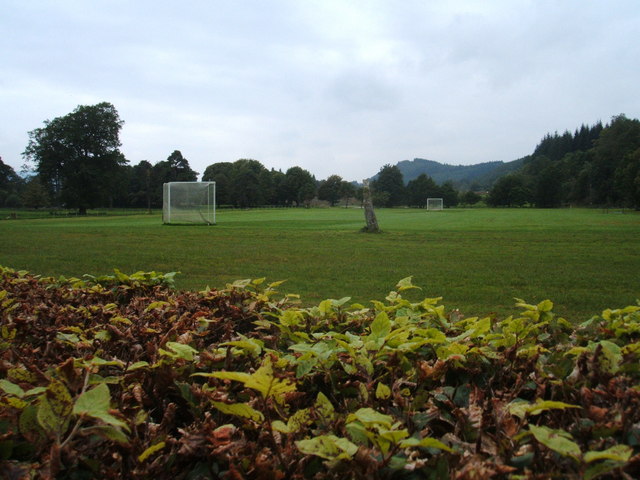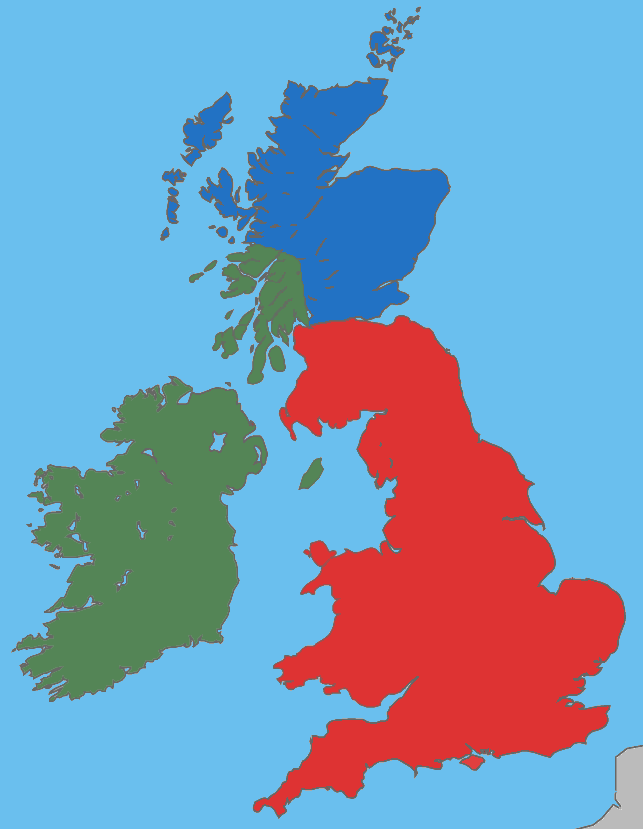|
Iomain
was a hybrid sport formed from shinty and hurling created in 2013. is a Gaelic word, meaning 'driving', and is one of the words traditionally used in Scotland to refer to shinty and Irish dialect to hurling. It was argued that it might replace composite rules shinty–hurling in Scotland–Ireland internationals. Unlike composite rules, it was to use a single type of stick for both sides, and also one goal design. The stick was made in the traditional shinty style with a much larger club face than in hurling but a longer shinty shaft. The goals used were shinty goals. It was designed also to be similar to the ground hurling that was once prevalent in Ireland, but has been superseded by the aerial variety. was played at Croke Park Croke Park (, ) is a Gaelic games stadium in Dublin, Ireland. Named after Archbishop Thomas Croke, it is referred to as Croker by GAA fans and locals. It serves as both the principal national stadium of Ireland and headquarters of the Gaelic ... [...More Info...] [...Related Items...] OR: [Wikipedia] [Google] [Baidu] |
Shinty
Shinty () is a team sport played with sticks and a ball. It is played mainly in the Scottish Highlands and among Highland migrants to the major cities of Scotland. The sport was formerly more widespread in Scotland and even played in Northern England into the second half of the 20th century and other areas in the world where Scottish Highlanders migrated. While comparisons are made with hockey, the two games have several important differences. In shinty a player is allowed to play the ball in the air and use both sides of the stick. The latter is called a , which is wooden and slanted on both sides. The stick may also be used to block and to tackle, although a player may not come down on an opponent's stick, a practice called hacking. Players may also tackle using the body as long as it is shoulder to shoulder. The game was derived from the same root as the Irish game of hurling/ camogie and the Welsh game of bando, but has developed unique rules and features. These rules ... [...More Info...] [...Related Items...] OR: [Wikipedia] [Google] [Baidu] |
Composite Rules Shinty–hurling
Composite rules shinty–hurling () – sometimes known simply as shinty–hurling – is a hybrid sport of shinty and hurling which was developed to facilitate international matches between the two sports. Shinty–hurling is one of few team sports in the world without any dedicated clubs or leagues. It is currently played by both men's and women's teams only in tournaments or once-off internationals. The women's form of the game is called shinty/camogie. Rules The rules of the composite sport are designed to allow for neither side to gain an advantage, eliminating or imposing certain restrictions. The goals are those used in hurling, with 3 points for a goal (in the net under the crossbar) and 1 point for a shot over the crossbar. A stationary ball taken straight from the ground and shot over the crossbar scores 2 points. For the 2012 International Series, a goal became worth 5 points in an effort to increase the number of goals. This rule was abandoned for the 2013 ... [...More Info...] [...Related Items...] OR: [Wikipedia] [Google] [Baidu] |
Shinty
Shinty () is a team sport played with sticks and a ball. It is played mainly in the Scottish Highlands and among Highland migrants to the major cities of Scotland. The sport was formerly more widespread in Scotland and even played in Northern England into the second half of the 20th century and other areas in the world where Scottish Highlanders migrated. While comparisons are made with hockey, the two games have several important differences. In shinty a player is allowed to play the ball in the air and use both sides of the stick. The latter is called a , which is wooden and slanted on both sides. The stick may also be used to block and to tackle, although a player may not come down on an opponent's stick, a practice called hacking. Players may also tackle using the body as long as it is shoulder to shoulder. The game was derived from the same root as the Irish game of hurling/ camogie and the Welsh game of bando, but has developed unique rules and features. These rules ... [...More Info...] [...Related Items...] OR: [Wikipedia] [Google] [Baidu] |
Hurling
Hurling (, ') is an outdoor Team sport, team game of ancient Gaelic culture, Gaelic Irish origin, played by men and women. One of Ireland's native Gaelic games, it shares a number of features with Gaelic football, such as the field and goals, the number of players and much glossary of Gaelic games terms, terminology. The same game played by women is called camogie ('), which shares a common Gaelic root. The objective of the game is for players to use an Fraxinus excelsior, ash wood stick called a hurl or Hurley (stick), hurley (in Irish a ', pronounced or in English) to hit a small ball called a ' (pronounced in English) between the opponent's goalposts either over the crossbar for one point or under the crossbar into a net guarded by a gaelic football and Hurling positions#Goalkeeper, goalkeeper for three points. The ' can be caught in the hand and carried for not more than four steps, struck in the air or struck on the ground with the hurley. It can be kicked, or slapp ... [...More Info...] [...Related Items...] OR: [Wikipedia] [Google] [Baidu] |
Hybrid Sport
A hybrid sport combines two or more (often similar) in order to create a new, or to allow meaningful competition between the players of those sports. List ;B * Biathlon - a hybrid sport combining cross-country skiing and rifle shooting. Contestants ski through a cross-country trail system whose total distance is divided into either two or four shooting rounds. * Bossaball – a hybrid sport combining elements of volleyball, association football, gymnastics and capoeira, played on a field with three bases. There is a trampoline at the third base along with a net. Allowing players to bounce high to spike or touch the ball and touch it with any part of the body, especially arms and hands ;C * Chess boxing – a hybrid sport which combines the sport of boxing with games of chess in alternating rounds. Chess boxing fights have been organized since early 2003. The sport was started when Dutch artist Iepe Rubingh, inspired by fictional descriptions of the sport in the writing of Enki ... [...More Info...] [...Related Items...] OR: [Wikipedia] [Google] [Baidu] |
Goidelic Languages
The Goidelic ( ) or Gaelic languages (; ; ) form one of the two groups of Insular Celtic languages, the other being the Brittonic languages. Goidelic languages historically formed a dialect continuum stretching from Ireland through the Isle of Man to Scotland. There are three modern Goidelic languages: Irish ('), Scottish Gaelic ('), and Manx ('). Manx died out as a first language in the 20th century but has since been revived to some degree. Nomenclature ''Gaelic'', by itself, is sometimes used to refer to Scottish Gaelic, especially in Scotland, and therefore is ambiguous. Irish and Manx are sometimes referred to as Irish Gaelic and Manx Gaelic (as they are Goidelic or Gaelic languages), but the use of the word ''Gaelic'' is unnecessary because the terms Irish and Manx, when used to denote languages, always refer to those languages. This is in contrast to Scottish Gaelic, for which "Gaelic" distinguishes the language from the Germanic language known as Scots. In Englis ... [...More Info...] [...Related Items...] OR: [Wikipedia] [Google] [Baidu] |
The Scotsman
''The Scotsman'' is a Scottish compact (newspaper), compact newspaper and daily news website headquartered in Edinburgh. First established as a radical political paper in 1817, it began daily publication in 1855 and remained a broadsheet until August 2004. Its parent company, National World, also publishes the ''Edinburgh Evening News''. It had an audited print circulation of 8,762 for July to December 2022. Its website, Scotsman.com, had an average of 138,000 unique visitors a day as of 2017. The title celebrated its bicentenary on 25 January 2017. History ''The Scotsman'' was conceived in 1816 and first launched on 25 January 1817 as a liberal weekly newspaper by lawyer William Ritchie (Newspaper Editor), William Ritchie and customs official Charles Maclaren in response to the "unblushing subservience" of competing newspapers to the Edinburgh establishment. These two plus John Ramsay McCulloch were co-founders of the venture. The paper was pledged to "impartiality, firm ... [...More Info...] [...Related Items...] OR: [Wikipedia] [Google] [Baidu] |
Croke Park
Croke Park (, ) is a Gaelic games stadium in Dublin, Ireland. Named after Archbishop Thomas Croke, it is referred to as Croker by GAA fans and locals. It serves as both the principal national stadium of Ireland and headquarters of the Gaelic Athletic Association (GAA). Since 1891 the site has been used by the GAA to host Gaelic sports, including the annual All-Ireland finals in List of All-Ireland Senior Football Championship finals, Gaelic football and List of All-Ireland Senior Hurling Championship finals, hurling. A major expansion and redevelopment of the stadium ran from 1991 to 2005, raising capacity to its current 82,300 spectators. This makes Croke Park the List of European stadiums by capacity, fourth-largest stadium in Europe, and the largest not usually used for association football in Europe. Along with other events held at the stadium include the opening and closing ceremonies of the 2003 Special Olympics World Summer Games, 2003 Special Olympics, and numerous musi ... [...More Info...] [...Related Items...] OR: [Wikipedia] [Google] [Baidu] |
Gaelic Games In Scotland
Gaelic (pronounced for Irish Gaelic and for Scots Gaelic) is an adjective that means "pertaining to the Gaels". It may refer to: Languages * Gaelic languages or Goidelic languages, a linguistic group that is one of the two branches of the Insular Celtic languages, including: ** Primitive Gaelic or Archaic Gaelic, the oldest known form of the Gaelic languages ** Old Gaelic or Old Irish, used c. AD 600–900 ** Middle Gaelic or Middle Irish, used c. AD 900–1200 ** Irish Gaelic (), including Classical Gaelic and Early Modern Gaelic, c. 1200-1600) *** Gaelic type, a typeface used in Ireland ** Scottish Gaelic (), historically sometimes called in Scots English *** Canadian Gaelic ( or ), a dialect of Scots Gaelic spoken in the Canadian Maritime region ** Manx Gaelic ( or ), Gaelic language with Norse elements Culture and history *Gaelic Ireland, the history of the Gaels of Ireland * Gaelic literature *Gaelic revival, a movement in the late 20th century to encourage both the us ... [...More Info...] [...Related Items...] OR: [Wikipedia] [Google] [Baidu] |
Sports Originating In Ireland
Sport is a physical activity or game, often competitive and organized, that maintains or improves physical ability and skills. Sport may provide enjoyment to participants and entertainment to spectators. The number of participants in a particular sport can vary from hundreds of people to a single individual. Sport competitions may use a team or single person format, and may be open, allowing a broad range of participants, or closed, restricting participation to specific groups or those invited. Competitions may allow a "tie" or "draw", in which there is no single winner; others provide tie-breaking methods to ensure there is only one winner. They also may be arranged in a tournament format, producing a champion. Many sports leagues make an annual champion by arranging games in a regular sports season, followed in some cases by playoffs. Sport is generally recognised as system of activities based in physical athleticism or physical dexterity, with major competitions admit ... [...More Info...] [...Related Items...] OR: [Wikipedia] [Google] [Baidu] |






